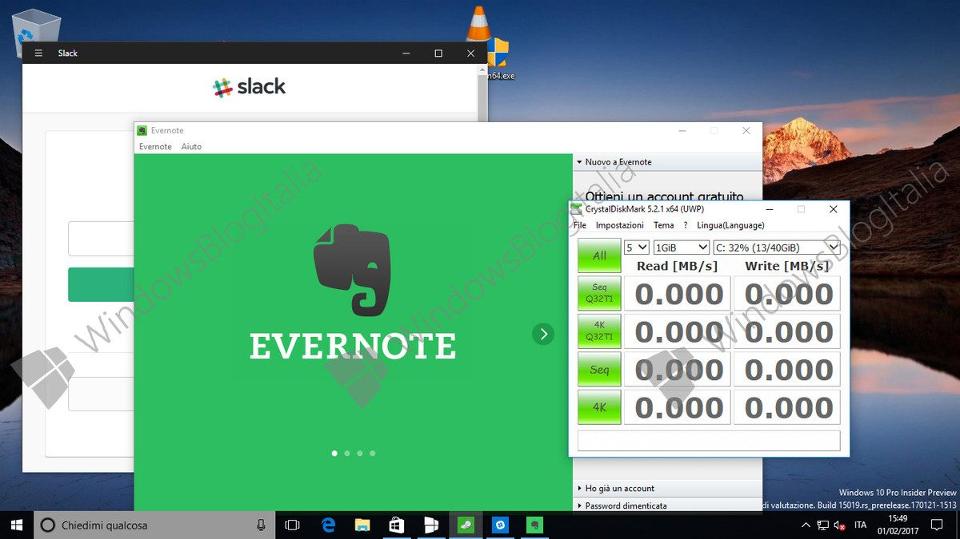In operating system terms Windows 10 remains a baby at just 18 months, but massive leaks have revealed Microsoft MSFT +0.85% is working on a brand new Windows platform and it is unlike anything we have seen before…
Dubbed ‘Windows Cloud’, the references to the mysterious operating system first broke last week via code references in a new beta for the upcoming Windows 10 Creators Update. Microsoft immediately told CNet “We have nothing to share”, but now the floodgates have opened.

Windows Cloud looks identical to Windows 10 but works very differently. Image credit: Windows Blog Italia
Today Windows Blog Italia obtained screenshots of the operating system and Microsoft enthusiast site Thurrott.com has subsequently one-upped them by getting its hands on an actual build of Windows Cloud for a test drive.
So what is Windows Cloud?
In a nutshell: a stripped down version of Windows 10 designed only to run Universal Windows Platform (UWP) apps – aka apps designed to run on both desktop and mobile devices. Any attempt to run standard desktop programs on Windows Cloud results in the warning message: “The app you’re trying to run isn’t designed for this version of Windows”.
Surprisingly, even Centennial apps don’t work right now – though that will probably change.

Windows Cloud will not run standard Windows desktop programs. Image credit: Thurrott.com
As for the ‘Cloud’ reference in the name? At present it makes little sense. The operating system is not 100% Cloud based like Google’s Chrome OS so it’s either just a cool buzzword Microsoft wants to use given its well stated “Cloud first” strategy or a reference to the platform being incredibly light weight – a stretch, I admit.
Does Windows Cloud Replace Windows 10?
Right now it appears Windows Cloud is more about supplementing Windows 10 than replacing it. How it is designed could give Microsoft an answer to Chrome OS, which is making great inroads in the budget sector – particularly education (and it now outsells Macs).
Furthermore Windows Cloud seems a smart way for Microsoft to test what could ultimately become the long term future for Windows: a stripped back, AWP exclusive, Cloud focused and maybe even introduce the potential for new pricing structures such as the monthly rental fees Microsoft already has in place for business.
As such should Windows Cloud start off as a separate operating system to Windows 10, I suspect the two will merge eventually.
Against this is Microsoft’s regularly repeated statement that Windows 10 is “the last version of Windows” (this is why). So suddenly switching strategy to managing two new Windows versions seems odd. It was also a disaster the last time Microsoft tried to do this with Windows 8 and Windows RT.
So Windows Cloud leaves us with more questions than answers. It is exciting, confusing, wilfully disruptive and potentially alienating. I’m intrigued…
[Source:-Forbes]




